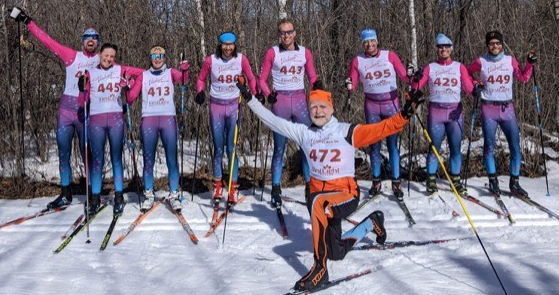Norway's obsession with nordic skiing makes most folks' obsession with nordic skiing look like child's play. Thus, the conference had a relatively high number of skiing-related presentations (many by Norwegian researchers, quite a few Swedes, a couple Finns and an Austrian if I remember all... topics covered biomechanics, physiology and coaching, among others).
One of the themes that stuck out in the presentations on training was volume and intensity of training. There was, an entire session on training to achieve optimal adaptations that, after "careful consideration", I chose to attend over the other 7 sessions happening at the same time (well, in reality the skier-magnet in me didn't really give me any other choice...). Other presentations were linked into sessions on physiology, coaching/testing, etc. The presentations discussed, for example, how high intensity training improves VO2max more effectively than moderate intensity training, and how long slow distance (LSD) training is essential for VO2max development/maintenance in even highly trained individuals. These presentations confirmed most of what we already understand about adaptations to training and there were no groundbreaking secrets on how to train, though throughout the congress, some new methods for the assessment of the effectiveness of training and what is going on at e.g. the neuromuscular or cellular level, were presented.
One presentation that stood out for me in a practical sense was one in which the researcher presented three colored charts of yearly training volume (intensity was denoted by different colors) from some TOP level skiers in Europe (I mean world-class here). The next slide was yearly training volume and intensity from a research project done in '99 using top US skiers. The main difference between these plans/training logs was the amount of green on the charts. Green was the color used to denote low-intensity distance training, of which there was significantly more of on the Euro charts than the US chart. While many training methods can produce good skiers, and while there are interindividual variations in training responses, I found it interesting that many of the best skiers in the world really do ski EASY (LOTS of green on their charts which is equal to about 75 to 90% of training volume performed below 2mmol blood lactate). The key observation here was not that total training volume between the Euros and the US differed, but that there was a lot more low intensity training visible on the Euro charts than on the US ones. Could this difference in volume of low intensity training be one of the keys as to why Euro skiers have traditionally dominated the podium? To my knowledge there are no studies directly comparing training between skiers from different nations (and which method(s) might be more effective), but from an observational standpoint I would venture to say that it makes a difference.
In my skiing experience, long slow distance workouts didn't always end on such a slow note even if they started out in the zone and I'm betting I'm not the only one... The competitiveness of a team and multitasking (thinking about the homework/upcoming exam/*insert something else that could make your mind spin here* while skiing) can gradually work you out of the zone as can the expectation that you always work as a team. In college, we logged our hours of training as "easy" when we skied for 3 hours even when the heart rate monitor average BPM didn't necessarily agree...this means that the training volume I had at moderate and high intensity was greater than my training log will let you believe....of course I should have known better, but hindsight is always 20/20 (If you want to read more on that on a "personal level" I wrote a series of six "ski lessons" last year after going to a Finnish Ski Association Coaching Seminar. (the views expressed are mine alone) Here are the links:


No comments:
Post a Comment